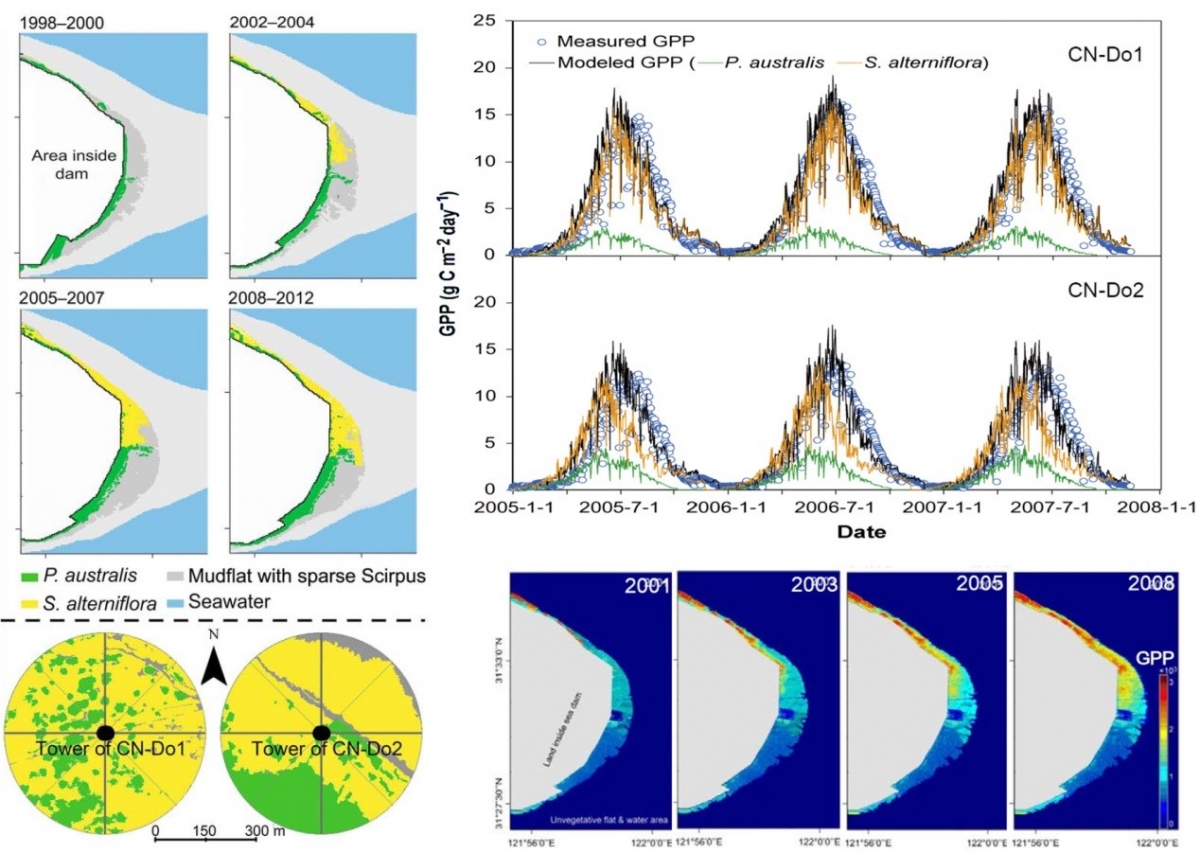Plant invasion impacts on the gross and net primary production of the salt marsh on eastern coast of China: Insights from leaf to ecosystem
The exotic Spartina alterniflora from North America has been rapidly invading the entire Chinese coast, while the impacts of plant invasion on the gross (GPP) and net primary production (NPP) of the coastal salt marshes were less known. In this study, we investigated the photosynthetic performance, leaf characteristics, and primary production of the exotic C4 grass and the dominant native C3 grass (Phragmites australis) in two marsh mixtures (equipped with eddy covariance systems) in the Yangtze Estuary. The light-saturated photosynthetic rate and annual peak leaf area index (LAI) of S. alterniflora was higher than that of P. australis throughout the growing season. The leaf nitrogen content of P. australis declined sharper during the latter growing season than that of S. alterniflora. The leaf-to-canopy production model with species-specific (C3 and C4 types) parameterizations could reasonably simulate the daily trends and annual GPP amount against the 3 year flux measurements from 2005 to 2007, and themodeled NPP agreed with biomass measurements from the two species during 2012. The percentage contributions of GPP between S. alterniflora and P. australis were on average 5.82:1 and 2.91:1 in the two mixtures, respectively. The
annual NPP amounts from S. alterniflora were higher by approximately 1.6 times than that from P. australis. Our results suggested that higher photosynthesis efficiency, higher LAI, and longer growing season resulted in greater GPP and NPP in the exotic species relative to the native species. The rapid expansion rate of S. alterniflora further made it the leading contributor of primary production in the salt marsh.

List of relate results:
-
Journal of Geophysical Research ,
2015 ,
120(1)
: 169-186.
-
Estuaries and Coasts ,
2015 ,
38(1)
: 310-324.
